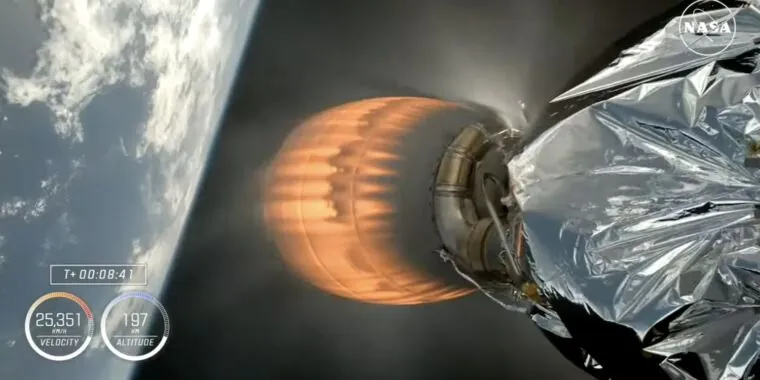
SpaceX's Falcon 9 Faces Unprecedented Upper Stage Anomaly Post Launch!
2024-09-30
Overview of the Situation
SpaceX is currently investigating a significant issue concerning the upper stage of its Falcon 9 rocket. This malfunction occurred following a Saturday launch where the Falcon 9 successfully transported a two-man crew to the International Space Station (ISS). However, the rocket's upper stage unexpectedly reentered Earth's atmosphere and splashed down into the ocean outside its intended disposal zone.
Details of the Crew-9 Mission
The mission, known as Crew-9, featured NASA astronaut Nick Hague and Russian cosmonaut Aleksandr Gorbunov, both of whom made it safely to the ISS on Sunday for their five-month mission aboard the research hub. After liftoff from Cape Canaveral Space Force Station in Florida, the Falcon 9's second stage utilized its Merlin vacuum engine for more than six minutes to achieve orbit.
The engine was scheduled to reignite later to guide the upper stage back into the atmosphere, ensuring it did not contribute to space debris.
SpaceX's Response to the Anomaly
Following the successful launch, SpaceX reported on X (formerly Twitter) that while the second stage was ultimately disposed of in the ocean as planned, it did not follow the expected trajectory. "After today’s successful launch of Crew-9, Falcon 9’s second stage was disposed in the ocean as planned, but experienced an off-nominal deorbit burn," the company stated.
They emphasized that they would resume operations only after thoroughly investigating the root cause of this anomaly.
Safety Measures and Concerns
Before the launch, safety advisories were issued to mariners and pilots, delineating that the upper stage was expected to fall within a precise corridor in the South Pacific, east of New Zealand. Typically, most of the rocket is designed to incinerate upon reentry; however, SpaceX carefully targets less-traveled ocean areas to decrease the risk of surviving debris.
Speculations on the Cause
SpaceX has yet to release more detailed information about the upper stage's malfunction. Astrophysicist Jonathan McDowell speculated that the malfunction may have resulted from a "slight underburn" of the Merlin vacuum engine, likely causing the rocket to veer off course and reenter further northeast than planned.
History of Recent Malfunctions
This event marks the third malfunction for SpaceX's Falcon 9 in under three months—a surprising turn of events for a rocket that had boasted an impressive record of 335 successful missions since 2016. The most recent incident stemmed from a launch on July 11, wherein the upper stage failed, stranding a batch of 20 Starlink satellites in a suboptimal orbit, leading to their untimely demise upon reentry.
In response to that earlier failure, engineers identified a crack in a pressure sensor's "sense line" linked to the rocket's liquid oxygen system, which led to a leak and subsequent failure during the second engine burn.
Looking Ahead
As SpaceX races to ascertain what caused the latest issue, the space community watches closely, hopeful for a swift return to their regular launch cadence.
As SpaceX continues to push the boundaries of space travel, each challenge encountered only adds to the narrative of innovation and resilience in one of the most dynamic sectors of technology. Will this latest setback be a simple hiccup in their ambitious journey, or will it signal a more concerning trend for the future of space exploration? Only time will tell!



 Brasil (PT)
Brasil (PT)
 Canada (EN)
Canada (EN)
 Chile (ES)
Chile (ES)
 España (ES)
España (ES)
 France (FR)
France (FR)
 Hong Kong (EN)
Hong Kong (EN)
 Italia (IT)
Italia (IT)
 日本 (JA)
日本 (JA)
 Magyarország (HU)
Magyarország (HU)
 Norge (NO)
Norge (NO)
 Polska (PL)
Polska (PL)
 Schweiz (DE)
Schweiz (DE)
 Singapore (EN)
Singapore (EN)
 Sverige (SV)
Sverige (SV)
 Suomi (FI)
Suomi (FI)
 Türkiye (TR)
Türkiye (TR)